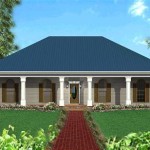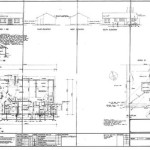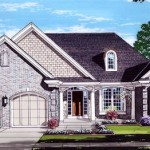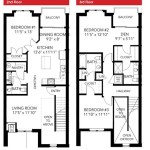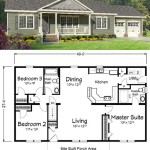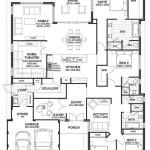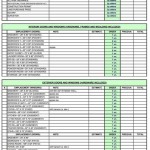Home Plans With a Loft: Maximizing Space and Style
Loft home plans represent a popular architectural design choice, particularly for individuals and families seeking to optimize space within a smaller footprint. These plans incorporate a loft area, typically an open space situated above a main living area, providing a versatile and often visually appealing element to the home's design. The appeal of loft living stems from its ability to blend functionality with architectural interest, creating homes that feel both spacious and intimate.
The versatility of a loft space is a key advantage. It can serve as a bedroom, home office, library, entertainment zone, or even a playroom, depending on the homeowner's needs and preferences. This adaptability makes loft home plans suitable for a diverse range of lifestyles, from young professionals to growing families and retirees seeking to downsize without sacrificing functionality.
Moreover, loft home plans often feature open floor plans, which enhance the sense of spaciousness and promote natural light flow throughout the home. This combination of open design and a dedicated loft area contributes to a feeling of airiness and connectivity, making these plans attractive to those who value both functionality and aesthetic appeal. Proper planning is crucial to ensure the loft area is well-integrated into the overall design, maximizing its potential as a functional and aesthetically pleasing element of the home.
Key Considerations in Loft Home Plan Design
Designing a home with a loft requires careful consideration of several factors to ensure the space is both functional and aesthetically pleasing. These factors include the size and layout of the loft, the accessibility of the loft area, and the integration of the loft with the rest of the home's design.
Size and Layout: The size of the loft should be proportionate to the overall size of the home. A loft that is too large can overwhelm the main living area, while a loft that is too small may not be functional. The layout of the loft should also be carefully considered, taking into account the intended use of the space. For example, if the loft is to be used as a bedroom, it should be designed to provide privacy and adequate ventilation. If it is to be used as a home office, it should be designed to provide ample natural light and a quiet workspace. The placement of windows and skylights should be strategically planned to maximize natural light and ventilation, while also considering privacy and energy efficiency. Furniture placement and storage solutions should also be carefully planned to optimize the use of space and create a comfortable and functional environment.
Accessibility: The accessibility of the loft area is another important consideration. Lofts are typically accessed via stairs or a ladder. Stairs are generally preferred, as they are safer and easier to use, especially for older individuals or those with mobility issues. However, stairs can take up a significant amount of floor space, which may not be ideal in smaller homes. Ladders are a more space-efficient option, but they can be less safe and less convenient to use. A spiral staircase can be a good compromise, offering a more compact footprint than traditional stairs while still providing a relatively safe and convenient means of access. The design of the access point should also consider building codes and safety regulations, ensuring that the stairs or ladder are properly constructed and meet all applicable requirements. Handrails and adequate lighting should be included to further enhance safety.
Integration with the Home's Design: The loft area should be seamlessly integrated with the rest of the home's design. This can be achieved through the use of consistent architectural styles, materials, and finishes. The design of the loft should complement the overall aesthetic of the home, creating a cohesive and harmonious living space. For example, if the home features a modern design, the loft should also reflect this style. The use of lighting, color schemes, and decorative elements can also help to integrate the loft with the rest of the home. It's also important to consider soundproofing between the loft and the living spaces below, especially if the loft is intended for use as a bedroom or office.
Advantages of Choosing a Loft Home Plan
Loft home plans offer several advantages that make them a desirable choice for many homeowners. These advantages include maximizing space, creating a unique architectural feature, and offering versatility in the use of space.
Maximizing Space: Loft home plans are particularly well-suited for smaller homes or properties with limited square footage. By utilizing vertical space, they effectively expand the living area without requiring a larger footprint. This is especially appealing in urban environments where land is at a premium. The loft space can serve as a multifunctional area, accommodating various activities and reducing the need for separate rooms. This efficient use of space can also translated to lower construction costs and reduced energy consumption.
Creating a Unique Architectural Feature: A loft adds a distinctive architectural element to a home, enhancing its visual appeal and character. The open, airy feel of a loft can create a sense of spaciousness and sophistication. Lofts can be designed with a variety of styles, from rustic and industrial to modern and minimalist, allowing homeowners to personalize their space and reflect their individual tastes. The exposed beams, high ceilings, and unique angles often associated with loft designs can create a dramatic and visually engaging living environment. The addition of a loft can also increase the perceived value of the property, making it a more attractive investment.
Offering Versatility: As mentioned earlier, the versatility of a loft space is a major advantage. It can be adapted to serve a variety of purposes, depending on the changing needs of the homeowner. This adaptability makes loft home plans a smart investment for the future. The loft space can easily be transformed from a home office to a guest bedroom, a playroom to a reading nook, or any other function that suits the homeowner's lifestyle. This flexibility makes loft home plans ideal for individuals and families who anticipate changes in their living situation or who simply value the ability to customize their space to meet their evolving needs.
Common Loft Design Styles and Inspirations
Loft designs are incredibly diverse, ranging from rustic and industrial to contemporary and minimalist, each offering its own unique aesthetic and functionality. Understanding these common styles can provide inspiration and guide homeowners in making informed decisions about their loft design.
Industrial Loft: This style emphasizes raw, exposed materials such as brick, concrete, and metal. It often features exposed ductwork, pipes, and beams, lending a utilitarian and urban feel to the space. Furniture tends to be durable and functional, often incorporating reclaimed wood and metal accents. The color palette is typically neutral, with grays, blacks, and browns dominating the scheme, accented by pops of color from artwork or accessories. Industrial lofts often incorporate large windows to maximize natural light and create a sense of spaciousness.
Rustic Loft: Rustic loft designs embrace natural materials like wood, stone, and leather, creating a warm and inviting atmosphere. Exposed wooden beams are a common feature, as are stone fireplaces and wood-paneled walls. Furniture tends to be comfortable and inviting, often incorporating natural fabrics and textures. The color palette is typically warm and earthy, with browns, greens, and creams dominating the scheme. Rustic lofts often feature handcrafted details and vintage accents, adding to their charm and character.
Contemporary Loft: Contemporary loft designs emphasize clean lines, minimalist decor, and a focus on functionality. Furniture tends to be sleek and modern, often incorporating materials like glass, steel, and leather. The color palette is typically neutral, with whites, grays, and blacks dominating the scheme, accented by pops of color from artwork or accessories. Contemporary lofts often feature open floor plans and large windows to maximize natural light and create a sense of spaciousness.
Minimalist Loft: Minimalist loft designs take the contemporary aesthetic to an extreme, focusing on simplicity and eliminating unnecessary clutter. Furniture is kept to a minimum, and each piece is carefully chosen for its functionality and aesthetic appeal. The color palette is typically monochrome, with whites and creams dominating the scheme. Minimalist lofts often feature clean lines, smooth surfaces, and a focus on natural light.
Inspiration for loft designs can be found in a variety of sources, including magazines, websites, and home design shows. Visiting open houses and touring model homes can also provide valuable insights and ideas. Working with an architect or interior designer can help homeowners to develop a loft design that is tailored to their specific needs and preferences, ensuring that the space is both functional and aesthetically pleasing.

20 House Plans With Lofts Tiny Small Luxury Designs Blog Homeplans Com

Small Cottage Floor Plan With Loft Designs

20 House Plans With Lofts Tiny Small Luxury Designs Blog Homeplans Com

Mid Loft House Plan Three Story Modern Urban Home Design

Cabin House Plan With Loft 2 Bed 1 Bath 1122 Sq Ft 176 1003

20 House Plans With Lofts Tiny Small Luxury Designs Blog Homeplans Com

Country Ranch Home Plan With Loft Overlooking Vaulted Great Room 72961da Architectural Designs House Plans

Tiny House Floor Plan With Bedroom Loft

20 House Plans With Lofts Tiny Small Luxury Designs Blog Homeplans Com

1 Bedroom Loft Apartment Floor Plans 550 Ultra Lofts

